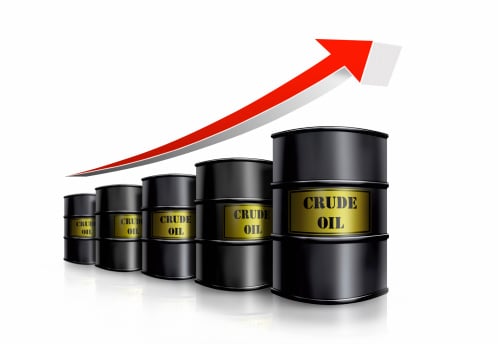Energy
Why Gasoline Prices Have to Beware Shrinking Inventories
Published:
Last Updated:

Total gasoline inventories decreased by 5.2 million barrels last week and are now well below the lower limit of the five-year average range. Total motor gasoline supplied (the EIA’s measure of consumption) averaged 8.8 million barrels a day over the past four weeks, up about 4.4% from the same period a year ago.
Distillate inventories rose by 200,000 barrels last week but remain near the lower limit of the average range. Distillate product supplied averaged more than 3.8 million barrels a day over the past four weeks, down by 1.1% when compared with the same period last year. Distillate production averaged 4.8 million barrels a day last week, roughly equal with the prior week’s production.
Tuesday evening, the American Petroleum Institute (API) reported that crude inventories rose by 7.1 million barrels in the week ending April 4, together with a decline of 3.7 million barrels in gasoline supplies and a rise of 239,000 barrels in distillate supplies. For the same period, Platts estimated a rise of 2.5 million barrels in crude inventories, a decline of 1.3 million barrels in gasoline inventories and a drop of 800,000 barrels in distillate inventories.
West Texas Intermediate (WTI) crude prices closed at $102.56 on Tuesday and were trading up slightly before the EIA report at around $102.60 a barrel. The WTI price rose to around $102.70 shortly after the report was released.
For the past week, crude imports averaged more than 7.3 million barrels a day, up about 481,000 barrels a day from the previous week. Refineries were running at 87.5% of capacity, with daily input of 15.3 million barrels a day, up just 22,000 barrels over the previous week’s average.
Imports were higher last week as refiners had to replace supplies that were delayed by the spill in the Houston Ship Channel. The sharp drop in gasoline supplies also is likely due to the same spill.
According to AAA, the current average pump price per gallon of regular gasoline is $3.601, up from $3.561 a week ago and $3.489 a month ago. Last year a gallon of regular cost $3.583 on average in the United States. As refineries come back online, price increases ought to moderate and level off. At this time last year, gasoline prices were falling, while they continue to rise this year.
Here is a look at how share prices at three U.S. producers are reacting to this report.
Exxon Mobil Corp. (NYSE: XOM) traded down about 0.4%, at $97.03 in a 52-week range of $84.79 to $101.74.
Chevron Corp. (NYSE: CVX) traded up 0.4%, at $118.29 in a 52-week range of $109.27 to $127.83.
Continental Resources Inc. (NYSE: CLR) traded up about 0.1%, at $129.29, a new 52-week high. The 52-week low is $72.35. Continental is the largest producer in the Bakken shale play.
ALSO READ: Why Americans Don’t Care About Gas Prices
Take the quiz below to get matched with a financial advisor today.
Each advisor has been vetted by SmartAsset and is held to a fiduciary standard to act in your best interests.
Here’s how it works:
1. Answer SmartAsset advisor match quiz
2. Review your pre-screened matches at your leisure. Check out the
advisors’ profiles.
3. Speak with advisors at no cost to you. Have an introductory call on the phone or introduction in person and choose whom to work with in the future
Take the retirement quiz right here.
Thank you for reading! Have some feedback for us?
Contact the 24/7 Wall St. editorial team.